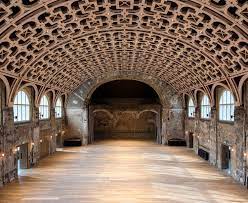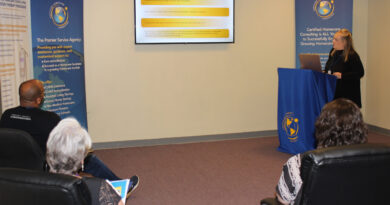Overcoming Challenges in Floor Estimating for Historic or Renovation Projects
Floor estimating for historic or renovation projects presents unique challenges that require a thoughtful and meticulous approach. Unlike new construction, these projects involve existing structures with historical significance, architectural intricacies, and potential unknowns. Estimators and contractors must navigate through these challenges to provide accurate estimates while preserving the historical integrity of the building.
One of the key challenges in floor estimating for historic or renovation projects is the need to analyze and understand the existing structure carefully. This often involves conducting thorough site assessments, including detailed measurements and inspections. Estimators must pay close attention to any architectural intricacies, such as ornate moldings, intricate patterns, or unique flooring materials that may need to be preserved or replicated.
The software for flooring contractors provides efficient cost estimation, streamlined project management, and optimized material planning for successful and profitable flooring projects.
Moreover, these projects often come with a multitude of unknowns. In this article, we will explore the key challenges faced in floor estimating for historic or renovation projects and strategies to overcome them.
1. Assessing the Existing Structure
Site Inspection
Before estimating, conduct a thorough site inspection to assess the condition of the existing floor. Identify any structural damage, decay, or areas that require repair or reinforcement. Also, take note of any unevenness or slopes in the floor surface as this will affect the installation process. Look for signs of moisture or water damage, such as discoloration or warping. These issues may indicate underlying problems that need to be addressed before proceeding with the flooring project.
During the site inspection, evaluating the subflooring material and its suitability for the intended flooring type is crucial.
Hidden Issues
Older buildings may have concealed issues, such as rotting subfloors or termite damage, which can impact the overall estimation. Factor in possible hidden repairs to avoid budget overruns.
2. Matching Historical Materials
Identifying Original Materials
For historical preservation, accurately identify the original flooring materials. Research historical records, photographs, or architectural plans to determine the authentic flooring type. Additionally, consult with experts in the field of historical preservation or architectural history to gain insights into the common flooring materials used during that particular era or time period. These professionals can provide valuable guidance and expertise on identifying the original flooring materials.
When researching historical records, pay attention to any descriptions or mentions of specific flooring types. This could include references to hardwood floors, marble tiles, linoleum sheets, or other popular choices of the time.
Sourcing Authentic Materials
Locating authentic flooring materials or suitable reproductions can be challenging. Collaborate with suppliers specializing in historical restoration to source appropriate materials.
3. Customization and Replication
Custom Designs and Patterns
Historical buildings often feature intricate custom designs and patterns on their floors. Incorporating these details requires skilled craftsmanship and may add to the estimation complexity. However, the effort put into customizing and replicating these designs can greatly enhance the overall aesthetic appeal of the historical building. Custom designs and patterns are not only visually captivating but also serve to honor and preserve the rich heritage and cultural significance associated with such buildings.
To recreate these intricate patterns, skilled craftsmen employ techniques such as hand-cutting tiles or specialized molds. Each design is meticulously replicated to ensure an accurate representation of the original floor pattern.
Replicating Original Finishes
If the original flooring is damaged beyond repair, consider replicating the historical finishes using modern materials while maintaining the building’s historical aesthetics.
4. Code Compliance and Regulations
Historical Preservation Guidelines
Adhere to historical preservation guidelines and regulations while estimating and executing the project. Ensure that any proposed changes comply with local historical preservation authorities. This includes obtaining the necessary permits and permissions from these authorities before implementing any alterations or renovations to historical structures or sites. It is essential to thoroughly research and familiarize oneself with the specific guidelines and regulations set forth by local historical preservation organizations.
When estimating the project, it is essential to consider the additional time, effort, and resources that may be required to adhere to these guidelines. Historical preservation often involves using specialized techniques, materials, or skilled craftsmen who are experienced in working with historic structures.
Building Codes and Safety Standards
Balance historical authenticity with modern safety and building codes. Some modifications may be necessary to meet current safety requirements, impacting the overall estimation.
5. Unforeseen Discoveries
Contingency Planning
Given the uncertainty in historical or renovation projects, include a contingency fund in the estimation to account for unforeseen discoveries or scope changes.
Collaborative Approach
Encourage open communication and collaboration among estimators, contractors, architects, and historical preservation experts to address unexpected challenges effectively.
6. Time and Labor Intensive
Detailed Planning
Extensive planning and research are vital for accurate estimations in historical or renovation projects. Devote ample time to understand the project’s complexities and historical context. This involves studying historical documents, architectural drawings, photographs, and even conducting site visits to gather as much information as possible. It is essential to identify the original materials used in construction and their availability today.
Moreover, understanding the historical context helps determine any cultural or societal influences that may have shaped the project. This knowledge enables architects and designers to make informed decisions about preserving or restoring specific elements while accommodating modern requirements.
The planning process also involves analyzing potential challenges that may arise during renovation or restoration work.
Skilled Craftsmanship
Engage skilled craftsmen experienced in historical restoration to ensure the precision and authenticity required for the project.
7. Material Salvaging and Recycling
Salvaging Existing Materials
Salvage and repurpose original flooring materials whenever possible to maintain historical authenticity and reduce waste.
Sustainable Practices
Incorporate sustainable material salvaging and recycling practices to align with modern environmental standards.
Conclusion
Floor estimating for historic or renovation projects demands a thorough understanding of the existing structure, historical significance, and attention to detail. The estimating software for commercial flooring streamlines cost calculations and material planning, optimizing efficiency and accuracy for large-scale projects. By conducting comprehensive site inspections, sourcing authentic materials, and collaborating with experts, estimators can overcome the challenges posed by historical buildings. Balancing historical preservation guidelines with modern building codes and safety standards is essential to achieve a successful renovation while preserving the building’s unique character. A contingency fund, skilled craftsmanship, and sustainable practices further contribute to a successful and responsible restoration project. With a dedicated and meticulous approach, floor estimators can ensure that historic and renovation projects stand the test of time while honoring their cultural and architectural heritage.
FAQs
Q: What are the main challenges in floor estimating for historic projects?
A: Challenges include assessing the existing structure, matching historical materials, customizing designs, complying with historic preservation guidelines, and dealing with unforeseen discoveries.
Q: How can I source authentic historical flooring materials?
A: Research historical records and collaborate with suppliers specializing in historical restoration to locate suitable materials.
Q: What is the importance of contingency planning in historical renovation projects?
A: Contingency planning allows for unforeseen discoveries and scope changes, ensuring the project stays on track without budget overruns.
Q: How can I balance historic preservation with modern building codes?
A: Collaborate with historic preservation experts and architects to find solutions that comply with both historical guidelines and modern safety standards.
Q: What role do sustainable practices play in historical renovation?
A: Salvaging existing materials and incorporating sustainable practices reduce waste and align the project with modern environmental standards.




